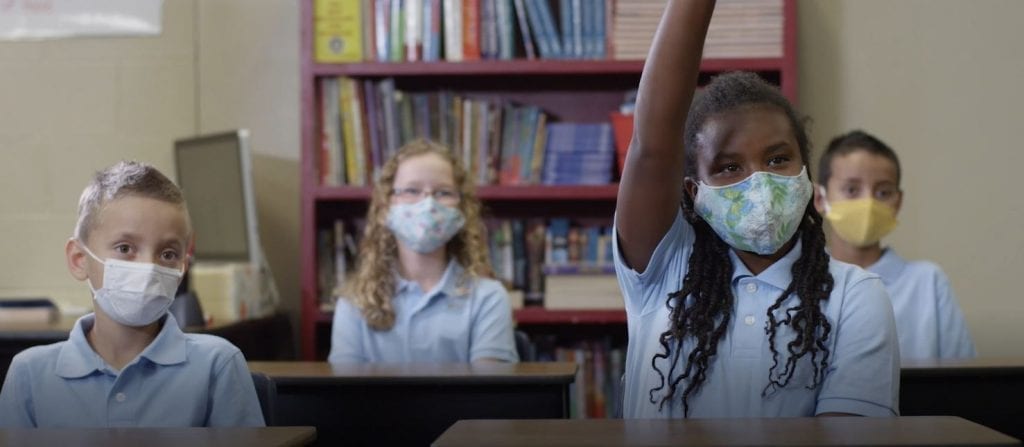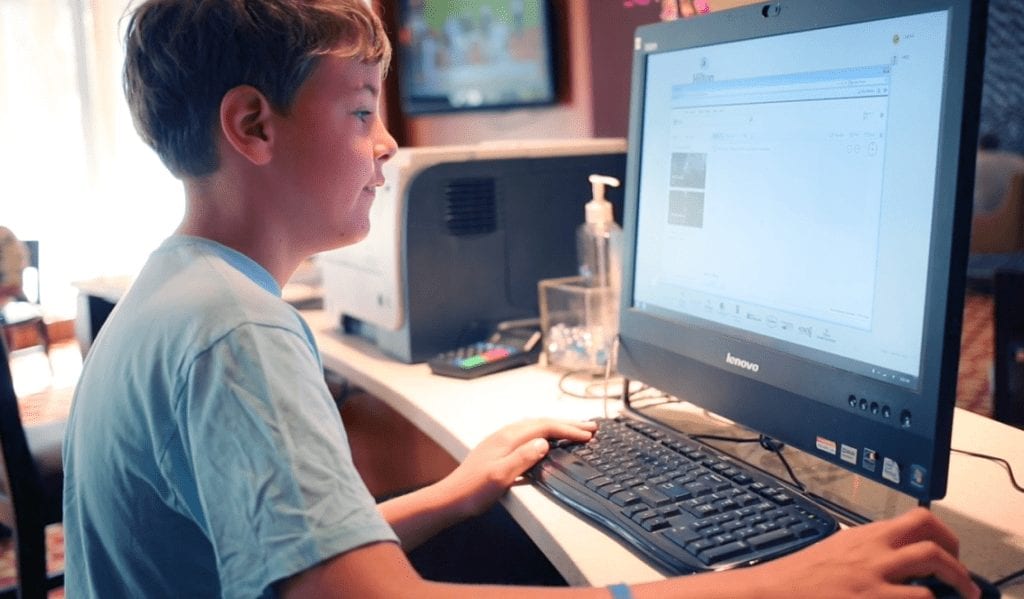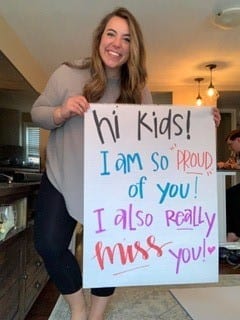Connectivity. Ask me a few years ago about what this word means to me in my classroom and I probably would have related it back to the lack of good wifi at school. But this year, the year of extreme and constant changes in the education landscape, connectivity has become a word that I cherish and place a lot of value on.
My role as a teacher is, by definition, to help students acquire knowledge and competence. Those are the requirements of my vocation. Seems pretty easy and straightforward, right? I guess it would be if every student was cut from the same cloth. Fortunately, the people that sit in my classroom are all as unique as their fingerprints. What motivates one turns the other off. Topics that interest one disengages the others. How am I supposed to fulfill my job description now? Connectivity and relationships. I need to understand my kids, their needs, interests and personalities for my classroom to be a success, whether I’m teaching in person, online, or both.

My students need to feel valued, listened to, and that they have a vital role in the community of our classroom. Without these emotions or investments, my classroom is void of meaning and learning. I started to think outside of the box this year to make sure I didn’t miss these connections. Social distancing, regulations, schedules and plans that are changing all the time were challenges I had to recognize and acknowledge. I was not going to have an answer for everything but being open about that truth with my class was intentional. I wanted them to see and help me problem solve issues. Remote learning and my classroom not looking the same as it did last year, was no longer an excuse. I needed to put myself in the place of my students.

Why would I invest effort into a place or idea if I do not feel seen or valued? Why would the kids that sit in my room listen to me if I do not listen to them first? Do I enjoy listening to every single, usually random, story that a third grader or middle schooler has to share? I am going to be honest and say, that’s a no, but is it important that I take the time to listen to them? Yes.
If I listen to them, place value in their voice, no matter how relevant or inconsequential, they are way more likely to listen to me. This has become very clear during remote learning. I only have a very short window of time to teach the lesson of the day with technology cooperating and students actually mentally present. But I take a little extra time to do an ice breaker with them, to listen and interact to their responses or jokes, to let them talk about what they are going through and connect with each other. Trust me, it’s important. Especially in a digital world of learning where kids are more likely to hide or not put themselves out there, they need to know that they are seen, even when their cameras are off.
Especially in a digital world of learning where kids are more likely to hide or not put themselves out there, they need to know that they are seen, even when their cameras are off.
This transition is hard for everyone, and for some kids, it’s even harder. Particularly the ones who did not have strong ties to friends or groups when the world turned upside down last March. Talking with some of my students, this year has been tough mentally, relationally, and academically.

One shared with me that she struggles with the material digitally and prefers to learn through hands-on experience. Another shared that he likes online learning because it allows him to do it at his own pace. Through the variety of responses, there was one strong theme in all their answers: Person-to person connections to their teacher, peers, lunch table pals and their community, was seriously lacking.
 Learning together in the classroom is different. Students cannot be in groups, manipulate get their hands on materials, make videos or participate in discussion groups due to regulations. A lack of reliable devices or a strong wifi signal at home causes frustrations. Students are far behind in their work because home isn’t the most ideal work environment. These things create a burden that most adults can’t handle. It’s hard for them to emotionally comprehend all of the stress, new responsibilities, and effort their education takes now.
Learning together in the classroom is different. Students cannot be in groups, manipulate get their hands on materials, make videos or participate in discussion groups due to regulations. A lack of reliable devices or a strong wifi signal at home causes frustrations. Students are far behind in their work because home isn’t the most ideal work environment. These things create a burden that most adults can’t handle. It’s hard for them to emotionally comprehend all of the stress, new responsibilities, and effort their education takes now.
The challenges and reality of this time have made me think outside of the box on how to reach kids digitally. Technology doesn’t put me in a box. It allows me to reach kids I haven’t reached before – to see the strengths of students I wouldn’t have seen before. My goal as an educator, now more than ever, is to connect with my students, whether on or off the screen, and let them know that they are important, worthy, and valuable of my time and the time of others.
“Technology doesn’t put me in a box. It allows me to reach kids I haven’t reached before – to see the strengths of students I wouldn’t have seen before.”
Connection. Understanding. Relationships. All three things that we need a little bit more of in this next year and within our classrooms- whatever those classrooms look like.
Follow me on Instagram (@teachertalesofmisssmith) to be a part of my #LenovoInnovators journey and join me on my adventure as a teacher this school year.
Watch the video below to hear more from Jess on what connectivity means to her personally and professionally.
